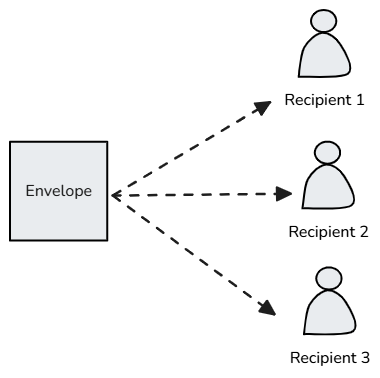Sequential Routing
With Sequential Routing, the envelope is sent to one recipient at a time, in the order you specify in the envelope’s recipient array. The next recipient only receives the document after the previous one has signed.
- Recipients sign in the order set in the envelope’s
recipientarray. - The envelope is sent to the next recipient only after the previous one signs.
- Ideal for workflows where the order of signatures matters.
- Next recipients can see the signatures and data introduced by the previous recipients.
- Recipients that depends on the completion of another one will have the status awaiting.
Parallel Routing
With Parallel Routing, the envelope is sent to all recipients at the same time. Each recipient can sign the document whenever they want, and there is no required signing order.
- All recipients receive the envelope simultaneously.
- They can sign in any order.
- Best for cases where the signing order doesn’t matter.
Setting the Envelope’s Routing
By default, envelopes are created with Sequential routing. If you don’t need a specific signing order, set routing to Parallel.Request (Full)